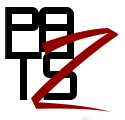Laser Triangulation SLAM
Samuel Martin
05/05/2017
Supervised by Dave Marshall; Moderated by Federico Cerutti
Robotic platforms regularly rely on lidar, sonar and GPS for positioning. However scanners for smaller robotic platforms are usually inaccurate, very expensive or complex to implement.
Laser triangulation sensors are used in quality assurance testing and 3d object scanning. They are also a lot easier to make at home compared to other scanners such as Lidar.
The project overview is to create a simple 3D environment scanner using laser triangulation to be mounted on a mobile robotic platform for environment mapping.
The project will need clearly defined milestones to allow the student to produce a deliverable regardless of how far they progress in the project.
An example set of milestones could be defined as the following:
- Implement hardware to capture an environment using 3D laser triangulation - Analyse the laser to retrieve depth information - Use this data to build a 2D depth map and 2D certainty map - Convert these 2D maps to a 3D mesh - Analyse the 3D mesh to define traversable voxels - Create a route planner to move the platform around the environment safely - Create a stitching algorithm to map scans together - Introduce an AI component to allow the robot to map an area as thoroughly as possible
This could be implemented using a webcam and a laser pointer connected to a Raspberry Pi. This would ensure the project could be done affordably. This should be coded in a high level language to decrease development time and promote simplicity.
